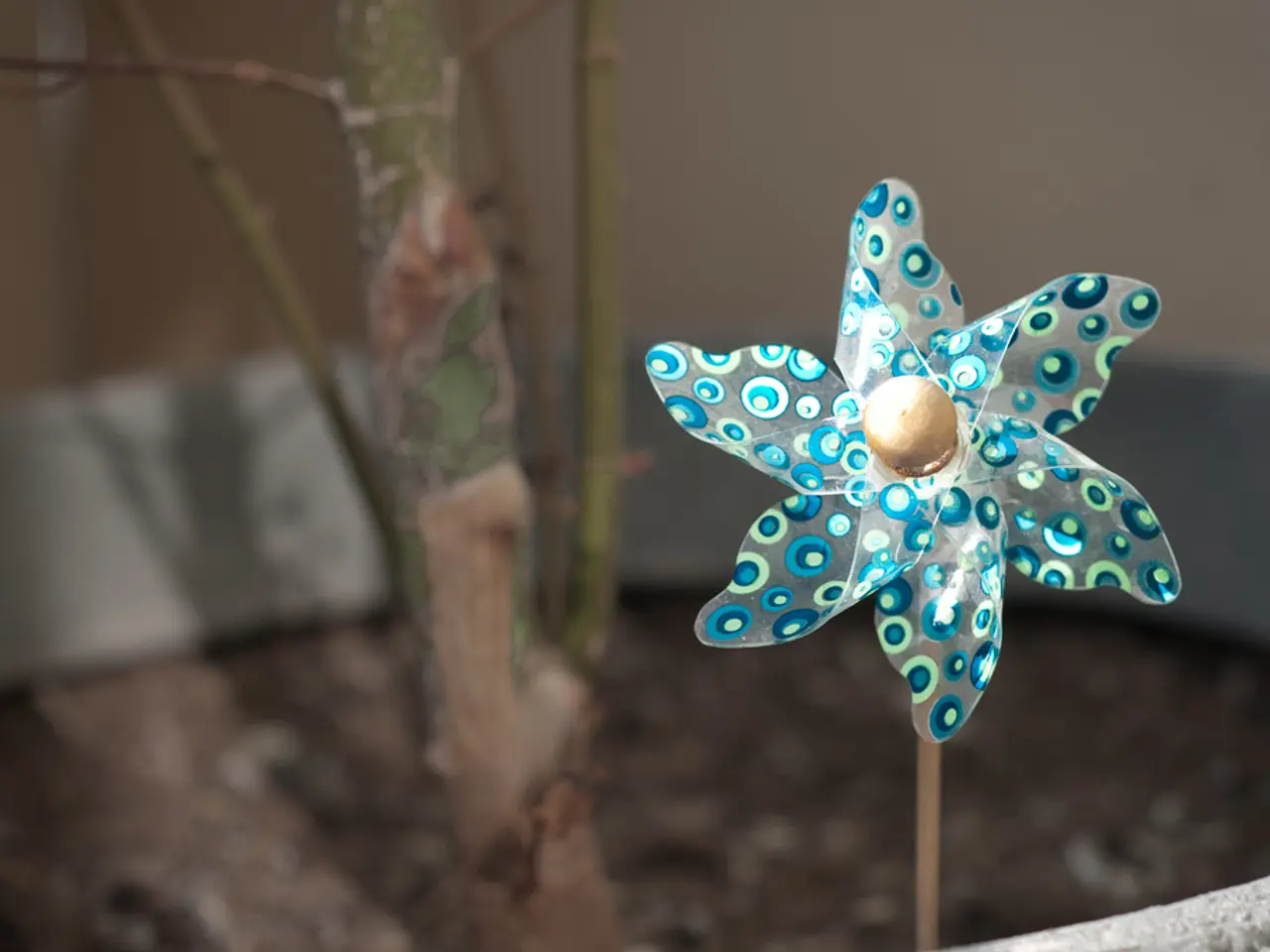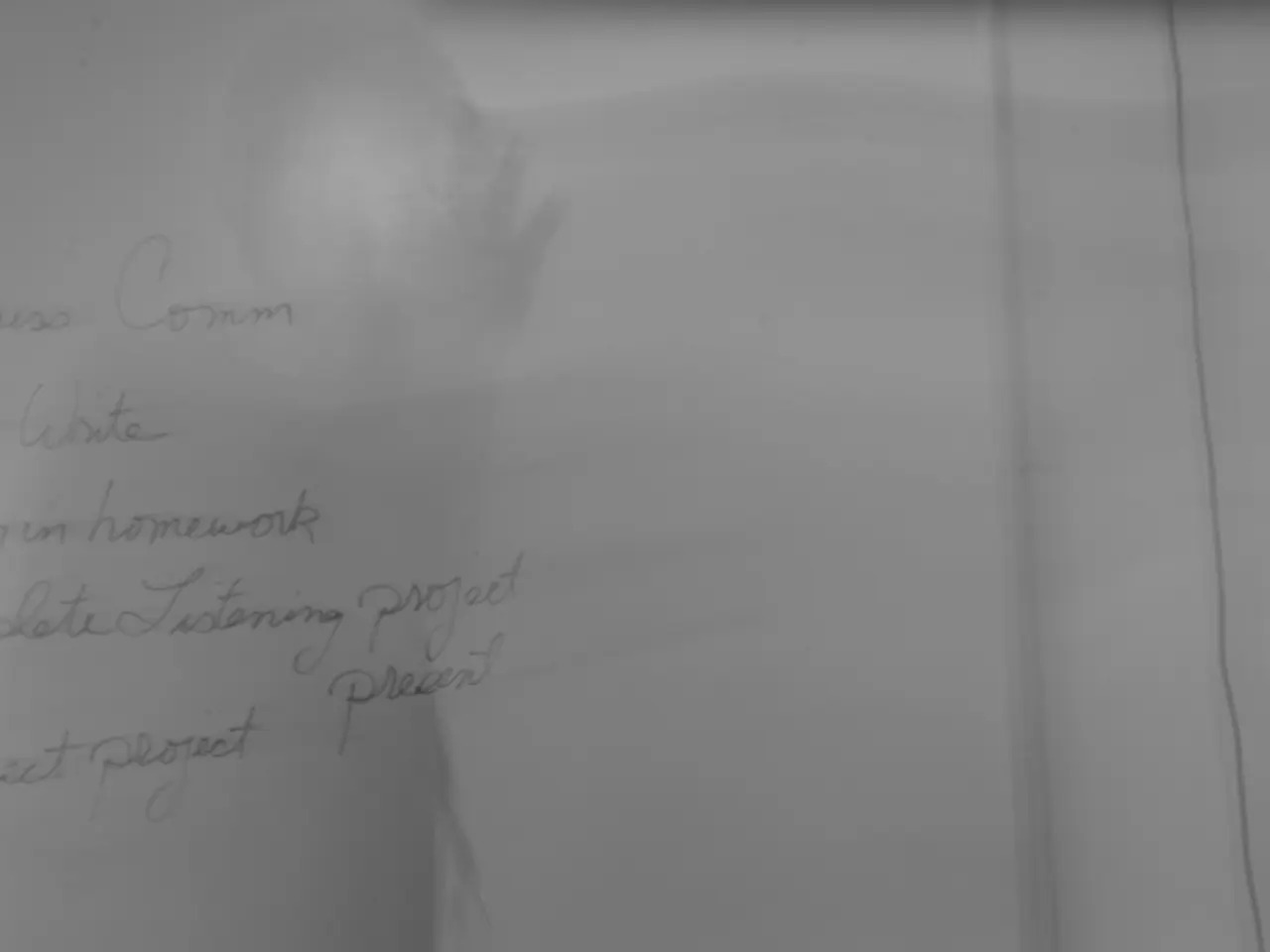Harnessed wind vortices amplify power output of mini turbines by 37%
In a groundbreaking discovery, researchers have found that pairing two miniature wind turbines and making them counter-rotate can significantly increase the amount of power generated compared to a single turbine. This breakthrough, which has major implications for small-scale wind energy systems, was made using a sophisticated technique called stereoscopic particle image velocimetry.
The mechanism behind this power boost lies in the capture of rotational energy. When a single micro wind turbine operates, it sets the incoming wind into rotational motion, a phenomenon known as the wake's "twist." In a conventional, single-turbine system, this rotational energy is not harvested and is typically dissipated as waste.
However, by placing a second turbine directly behind the first, at a distance of about 12 rotor radii, and configuring it to rotate in the opposite direction, the second turbine can extract energy from the wake's rotational flow that is left by the first turbine. This counter-rotating arrangement ensures that the second turbine efficiently converts the residual rotational energy into additional electricity, notably more effective than placing a second turbine that rotates in the same direction.
Recent research demonstrated this effect using stereoscopic particle image velocimetry, a 3D mapping technique that visualizes airflow around micro wind turbines. The results showed that the counter-rotating pair consistently outperformed traditional single or co-rotating setups, especially in turbulent conditions.
The findings could potentially lead to more efficient wind energy systems for critical infrastructure, off-grid communities, and mobile applications, such as charging stations for drones or field robotics. The small size of micro wind turbines has traditionally meant lower aerodynamic efficiency and a higher cost per kilowatt, limiting their widespread adoption. However, the tandem design could help overcome these challenges.
The team of researchers, led by Shuo Zhang, has been focusing on the potential of micro wind turbines, those with a diameter of less than 200 millimeters. The study has been published in the Journal of Renewable and Sustainable Energy, but no specific location or timeframe for the research was provided.
While the article does not mention the potential impact of the tandem design on the environment or wildlife, the researchers hope their findings will spur further innovation in micro-scale renewable energy, making it a more viable option for a wide range of applications disconnected from a traditional power grid.
However, it's important to note that the article does not provide any information about the potential challenges or limitations of the tandem design for wind turbines, the size or specific design of the wind turbines used in the study, or the cost or scalability of the tandem design for widespread adoption.
Despite these unanswered questions, the discovery of the power-boosting potential of counter-rotating micro wind turbines is an exciting step forward in the quest for more efficient, sustainable, and accessible renewable energy solutions.
- The breakthrough in small-scale wind energy systems, achieved through a counter-rotating arrangement of miniature wind turbines, could significantly contribute to the renewable energy sector, particularly in the industries of critical infrastructure, off-grid communities, and mobile applications like drone charging stations and field robotics.
- The ability to capture and harvest rotational energy from two counter-rotating micro wind turbines functions as an energy-efficient solution compared to traditional single or co-rotating turbine setups, especially in turbulent conditions, thanks to the stereoscopic particle image velocimetry technique.
- Science and technology have played crucial roles in underpinning this innovation, with the use of advanced techniques such as stereoscopic particle image velocimetry in the research and development of more efficient renewable energy solutions, contributing to the broad field of robotics.
- Finance and investment sectors could find potential opportunities for growth as the mini wind turbine technology advances, particularly as it becomes increasingly scalable and economically viable for widespread adoption, overcoming the common challenges of lower aerodynamic efficiency and higher cost per kilowatt associated with small-sized turbines.
- As researchers continue to explore the full potential of micro wind turbines, there is promise that the counter-rotating design could lead to significant advancements in the renewable energy industry, making it a more viable option in various disconnected applications, ultimately fostering further innovation and sustainable energy solutions.




